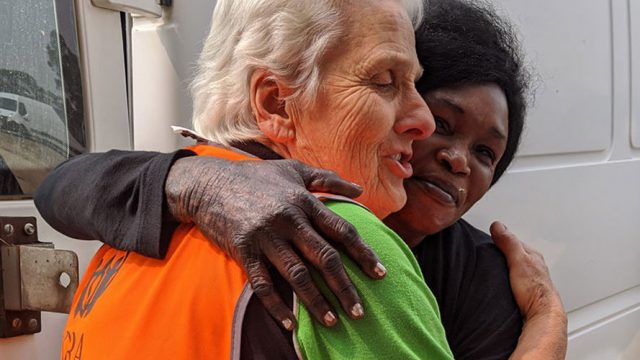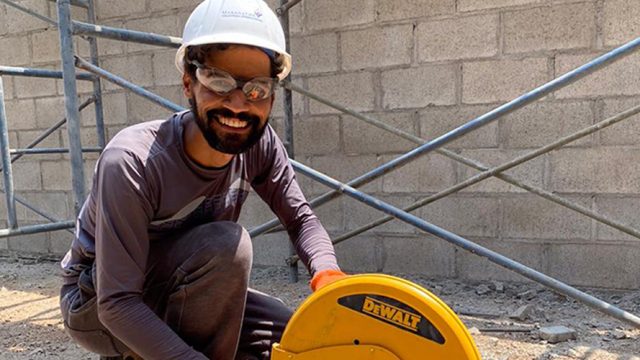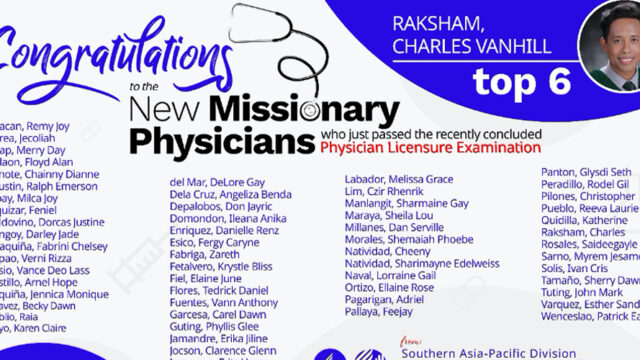Enrollment dips, but commitment to providing safe, high-quality education remains.

Like many educators in the United States and around the world, those in the Lake Union church region in the North American Division have embarked on an unprecedented challenge: a full year of instruction in the age of COVID-19.
Teachers have welcomed their students back with classrooms rearranged and masks at the ready, while conference education superintendents have worked to ensure both staff and students’ safety.
Opening Protocols
The Lake Union Conference is home to 69 Adventist schools run by Illinois, Indiana, Lake Region, Michigan, and Wisconsin conferences. With the health and welfare of both staff and students being of utmost importance, education superintendents have been evaluating and overseeing local state and county health departments’ implementation to create a safer environment.
Each conference is working closely with the recommendations provided by the North American Division and local governments to implement strict cleaning procedures, create safety practices for students moving throughout the building, and developing safety plans in the event a teacher, staff member, or student becomes sick with the coronavirus.
During summer Lake Union Education Department videoconference meetings, conference education superintendents shared ideas for preparing for a 2020-2021 school year rife with challenges amid a pandemic. During the meeting, superintendents compared notes on their various guidelines and how they’re trying to incorporate them.
For instance, the state of Michigan requires students in grades 6 through 12 to wear masks, which has caused frustration for some family members who do not see the need for their children to wear masks in school. The state of Michigan also is requiring schools to have a preparedness plan for phases 4 and 5.
“It’s been stressful for some of our schools as they try to navigate between government guidelines and the angst that some of our families have about what the state is requiring,” reports Jeremy Hall, Michigan Conference education superintendent.
Lori Aguilera, Illinois Conference education superintendent, has walked through her schools with principals to inspect and ensure that all schools are up to the set protocols and guidelines for reopening. As Illinois state health guidelines appear to be stricter than other states, Aguilera is making sure that all the desks are six feet apart or have a protective shield. Per the governor’s executive order, all students and teachers will be wearing masks. Without following these guidelines, Illinois schools are not allowed to reopen.
In Indiana, Tom and Renee Coffee, Indiana Conference education superintendent and associate education superintendent respectively, report that guidelines appear to be less prescriptive than in other states. Still, the Indianapolis area does have stricter guidelines and protocols.
Adjusting to Multi-Platform Teaching
At this time in a typical school year, teachers are preparing their classrooms for the start of a new year. But this fall, Adventist educators have to plan their classes for face-to-face, virtual, and hybrid classes.
As a result, educators are finding that their workloads have significantly increased. “They are not only teaching, but they are also preparing to teach both in the classroom and online,” says Linda Fuchs, Lake Union Conference education director.
According to an article published by the Brookings Institution in 2019, teachers work an estimated 42.2 hours a week — teaching, mentoring, grading, and attending meetings. For most Adventist educators, the number is higher. With the inclusion of preparing for distance education and class teaching, teachers are feeling the load.
The burnout factor for teachers is high on the superintendents’ minds. They are sensitive to the hours that teachers are putting in and recognize that every teacher has to decide on a balanced and sustainable workload for themselves.
“However, at least for the short term,” Hall says, “our teachers are going to have to work a little harder to make sure that they’re delivering good quality education, meeting the needs, and keeping students engaged.”
But at the same time, adds Brian Kittleson, Michigan associate education superintendent, “We know it’s also important that we encourage our teachers to take care of themselves.”
One short-term solution is for teachers to have an opportunity to learn from each other. “If our teachers are consistently putting in more than 50 hours a week without a way of balancing their work, we need to find a better way to help our teachers think smarter to avoid burnout,” Fuchs says.
Another challenge for educators is the use of cameras in the classroom for remote learning. While many camera programs already have safety features, school administrators are looking for even stronger ways to protect their students from potential danger zones.
In-person vs. Online Classes
Understandably, parents are feeling anxious about sending their children off to school. To relieve this anxiety, many schools in the Lake Union Conference are offering virtual classes for families who wish to keep their children home.
One way Thomas Huntress, South Bend Junior Academy principal, is helping to reassure parents is to make sure they have a list of protocols and understand them.
“The first thing we did was draw up protocols to follow. We then took a look at our facilities. We evaluated what changes needed to happen, like retrofitting drinking fountains to bottle stations, and making sure students have their equipment to reduce sharing potential germs.”
Maranatha Christian School in Wisconsin is a close-knit school with eight students. Because it is rural, many families weren’t feeling as anxious about sending their children back to school.
“Our families haven’t seen a lot of changes in their socializing and work life,” says Rosanna Zeismer, Maranatha Christian School principal. “We allowed our parents to tell us if they wanted their children to have face-to-face instruction or distance education. Since we are a small school, we were able to leave it up to the parents’ comfort level.”
Zeismer says she’s keeping her students outdoors as much as possible while in school and has two tents outside to hold classes.
Meanwhile, in a more urban setting, two teachers in Lake Region who started the year virtually decided that since they are in small schools and teach the same subject, they would share teaching responsibilities. “This could be a model for the future,” says Lake Union associate education superintendent Ruth Horton.
Staying Afloat Financially
Since the school year began, enrollment across the Lake Union is down about 14 percent. Fueling this dip is a list of multiple factors, according to Fuchs. “Some parents have lost jobs or don’t feel safe about sending their children to school. Several parents have decided to homeschool.”
The pandemic has impacted personal finances and church/school budgets. Fuchs says, however, “We are committed to praying every day for our schools. It is early in the year, but we are confident that God will bless our teachers as they stay committed to bringing spiritual values into every day of academic lessons.”
The original version of this story was posted by the Lake Union Herald.








